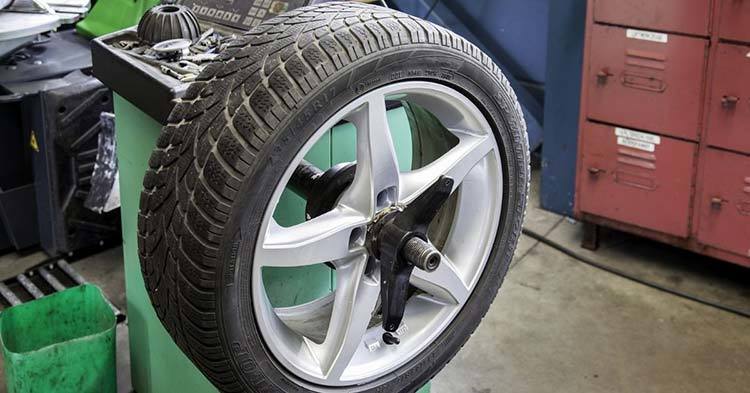
Why Do New Car Tires Wear Out So Quickly?
Like many things in life, car tires have expiry dates. Regardless of the company behind the design, new tires wear out so fast because of different factors. Remember how smooth the wheels felt when you first took your car for a spin? That’s because new vehicles sometimes come with soft tires for the smoothest possible ride.
More...
As a car owner, you might find it frustrating when your new tires wear out after a short while. Unfortunately, many warranty deals cover defects but not wear-and-tear, no matter how brief the tires last. Even if you switch to new tires for your car, some driving decisions can cause them to wear out faster than you planned.
From driving style to curb weight, here are some reasons new car tires wear out so quickly:
Curb Weight
A car’s curb weight is the weight of the vehicle in a resting state. Think of it as a measurement of the car’s actual weight, excluding passengers and cargo. Some manufacturers also factor the driver’s weight and fuel to determine the average curb weight.
The lighter a car’s curb weight, the quicker the driver can speed up in traffic. Therefore, vehicles with average curb weight can mount elevated roads faster. Higher curb weights have a slower acceleration time, which makes it difficult to stop or slow down. The more pressure the driver applies in motion, the greater the damage on the tires.
Unfortunately, you can’t control the curb weight. Some cars come as heavy as 4500 pounds, which weighs down on the wheels every time you turn. Instead, look out for vehicles with average curb weight for easy navigation.
Poor Tire Rotation
The front wheels on most front-wheel drive vehicles weigh heavier than the ones at the back. Since the front tires do most of the navigation, they wear faster than the ones behind. The rear tires bear less of the car’s weight compared to the front wheels. Poor tire rotation will also damage the front tires faster, no matter how recently you bought them.
Proper tire rotation means that the drivers spread the tire movement from front to back. The rotation method spreads the wear across all four wheels and maximizes the tires’ lifespan. Many manufacturers recommend rotating the tires every 5000 to 7500 miles.
Tire Pressure
Unfortunately, many new cars come with below-average tire pressure. Although a lower pressure makes the ride smoother, the inflation level can damage the tires prematurely.
Under-inflated tires show damage on the outer edges of the tread, while over-inflated tires show wears in the middle.
Proper tire inflation will enable the tires to handle the vehicle’s weight and brake force. Weak tire pressure affects the vehicle’s road traction, causing drivers to lose control of the wheel. Pay attention to the manual and adjust the pressure accordingly.
Tread Wear Index
As mentioned earlier, new cars come with softer tires, which can experience premature wear. New tires have assigned tread-wear index branded on the side walls. Many drivers use this figure to estimate the tires’ expiry date. However, since new cars don’t have the most durable tires, they wear off quickly before most people can notice.
Instead of relying solely on the index, measure the expiry date by at least half of the intended mileage. Otherwise, switch the tires for newer ones and use the manufacturer’s tire as your spare.
Suspension Design
The suspension system of tires, spring, shock absorbers, and linkages connects a vehicle to the wheels. Without this system, the car cannot move properly. The suspension design also controls how the driver navigates bumps and turns in traffic. However, you may not have so much control over your vehicle’s suspension design.
Fortunately, you have power over all other moving parts of the system. Worn-out shock absorbers and suspension parts can damage your tires prematurely. Damaged shocks will cause your car to bounce abruptly on the road, exposing your tires to punctures.
Wheel Alignment
In simple terms, wheel alignment means adjusting the vehicle’s moving parts to specific angles. So, the tires steer in the right direction. As you can tell, misaligned wheels affect how cars move in traffic. If you’ve ever struggled with moving the wheels, check out the tire alignment.
Most times, improper alignment damages the inner side of the tire while the outer sidewall remains new. The tire alignment ensures the wheels remain perpendicular to the ground so you can steer in the right direction. Having your mechanic inspect your wheels also reduces the brake pressure on the tires.
Driving Style
Driving fast can bring memories of watching your favorite speed racing movies. But guess what? All that acceleration and braking will damage your tires. Although you can’t control factors like soft cars and curb weight, your habits also determine how well your tires fare on the road.
Dynamic driving maneuvers scrape off the rubber on your tire, causing wear and tear. Other habits like fast braking or spinning the wheels can also damage the tires.
Related Posts
Negotiating a New Car’s
How to Change a Tire: A 7-Step Beginner Guide
Top Signs You Need To Replace Your Brakes
Warning Signs for Changing Your Car Brakes
How to Polish Aluminum Rim? Clean and Buff Your Aluminum Wheels Like a Pro
